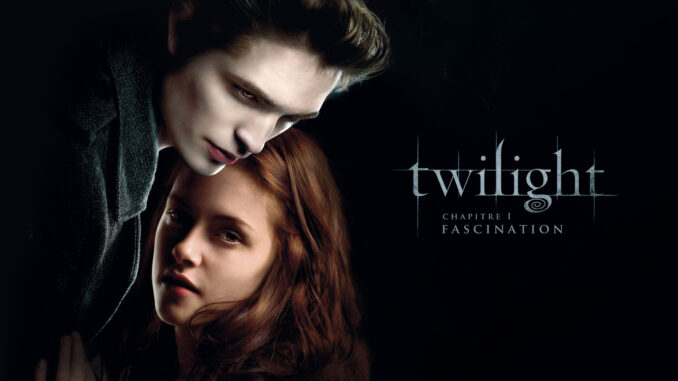
Critics Were Harsh, Fans Were Loyal: The Twilight Saga’s Polarising Reception
Cultural touchstones aren’t always universally adored; sometimes, they become battlegrounds. Few phenomena embody this schism as perfectly as Stephenie Meyer’s The Twilight Saga. From its nascent literary beginnings to its blockbuster cinematic adaptations, Twilight cleaved the public into two passionately opposed camps: those who savored its every angsty, blood-drenched page and frame, and those who saw it as a cultural blight, a testament to declining taste and dubious romantic ideals. The critics, armed with their literary scalpels, were unsparingly harsh. The fans, a legion of devoted followers, were fiercely, almost religiously, loyal. This stark divergence wasn’t just about a story; it was a fascinating, often acrimonious, debate about what we value in entertainment, who gets to decide, and the enduring power of a narrative that, for all its flaws, struck a deep chord with millions.
For the professional critic, Twilight was often an open invitation to intellectual disdain. Reviewers frequently sharpened their pens, dissecting its prose, plot, and thematic content with surgical precision. The common refrains were damning: Bella Swan, the human protagonist, was derided as a passive, underdeveloped character whose entire existence revolved around the two supernatural men vying for her affection. Her perceived lack of agency, critics argued, set a troubling precedent for young, impressionable readers. Edward Cullen, the sparkling, brooding vampire, was deemed a possessive, manipulative love interest whose romantic overtures often bordered on creepy surveillance. Jacob Black, the volatile werewolf, fared little better, often reduced to a symbol of unrequited, sometimes aggressive, devotion. The writing itself was frequently lambasted as simplistic, repetitive, and devoid of literary merit, with the infamous “sparkly vampires” becoming a universal shorthand for the saga’s perceived absurdity. For many critics, Twilight represented a regression – an anti-feminist narrative dressed up in supernatural fantasy, catering to the lowest common denominator of teenage romance without offering substance, complexity, or a positive message. The films, despite their box office success, were not spared, often panned for wooden acting, clunky dialogue, and a perceived lack of cinematic artistry. The critical consensus was clear: this was not high art; it was, at best, a guilty pleasure, and at worst, a cultural embarrassment.
Yet, as the critical establishment sharpened its knives, a counter-narrative flourished in the hearts and minds of its colossal fanbase. For them, Twilight was not just a series of books and films; it was an immersive world, a sacred text that spoke directly to their deepest yearnings. Bella, far from being passive, was relatable in her awkwardness, her feelings of being an outsider, and her desperate longing for a love that felt profound and all-consuming. Edward and Jacob, rather than problematic figures, embodied the archetypes of forbidden love and unwavering devotion, offering an escapist fantasy where ordinary girls could find themselves at the center of an epic, supernatural romance. Fans reveled in the melodrama, the angst, the excruciatingly slow-burn tension, seeing it not as a flaw, but as the very essence of teenage desire writ large. The “Team Edward” vs. “Team Jacob” divide became a cultural phenomenon, fostering a sense of community and identity among its followers, igniting passionate debates in school hallways, online forums, and midnight premiere lines. For these devotees, Twilight offered wish fulfillment, emotional resonance, and a sense of belonging. They weren’t seeking literary masterpieces or feminist manifestos; they were seeking magic, romance, and a story that made them feel seen, understood, and thrilled. The critics’ harsh pronouncements often served only to galvanize their loyalty, fueling a defiant pride in loving something so unabashedly, so fiercely, that others simply couldn’t comprehend.
The polarizing reception of The Twilight Saga, therefore, wasn’t merely a disagreement over taste; it was a profound illustration of the chasm between different modes of consumption and appreciation. Critics often approach art through a lens of intellectual rigor, historical context, and technical execution. Fans, particularly those of genre fiction and youth media, often seek emotional connection, escapism, community, and the simple joy of a story that resonates with their personal experiences and desires. Twilight became a Rorschach test of these differing priorities, exposing how gendered expectations, the perceived value of “girly” interests, and the inherent subjectivity of “good” storytelling can create such diametrically opposed realities.
Ultimately, The Twilight Saga endures not just as a cultural phenomenon, but as a fascinating case study in artistic reception. The critics were harsh, their judgments articulate and often well-founded on traditional metrics of quality. The fans were loyal, their devotion fervent and unwavering, founded on a deep emotional connection. The saga’s polarizing reception stands as a powerful reminder that while critics may shape the discourse, it is the audience, in all its diverse and subjective glory, that truly determines a story’s ultimate impact and its enduring place in the collective cultural consciousness. Love it or loathe it, Twilight proved that sometimes, the heart wants what the heart wants, regardless of what the head might say.
